Graham Reid | | 3 min read
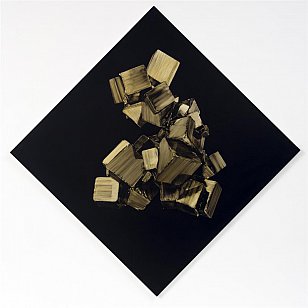
I am interested in making objects, paintings and installations that provoke questions about our magical thinking tendencies.
Magical thinking refers to causal reasoning that looks for correlations between objects, acts and utterances, where there are no plausible correlations.
Despite its proliferation amongst ‘modern’ people, magical thinking it is still commonly seen as false or failed science, or ‘primitive’ confusion.
As a ‘modern’ rational thinker my own superior attitudes reflect this: I do not believe in magic and congratulate myself for being more rational than others who do. Despite this, my own activity as an artist is enriched by animist relationships with materials, objects, and tools.
I talk to my work, asking what it wants me to do. I induce ritualistic conditions to increase the chance of success in both finding objects and making paintings and sculptures. I then exhibit these works in such a way that they appear laden with agency, intention and purpose, while concurrently reminding us of their inert status as objects.
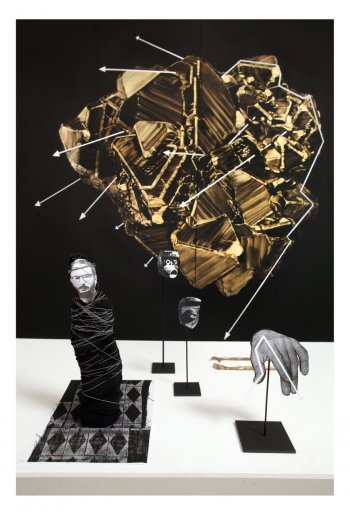 My
interest in magical thinking is underpinned by the tension between my
own modern attitudes and pre-modern animist behavior.
My
interest in magical thinking is underpinned by the tension between my
own modern attitudes and pre-modern animist behavior.
Taking on the role of curious skeptic, I am interested in making work that retains that tension, both for myself as a maker, but also for the viewer engaging with the work.
My paintings and installations are sites that pose questions about modern people’s conflicted relationships with objects and images, often using humour as a strategy.
In order to achieve this, both naive optimism and knowing skepticism need to be retained in the work itself.
Some of my recent work has attempted to simultaneously engage in, and concurrently critique, positive thinking practices that invoke the “law of attraction” – the belief that one’s positive or negative thoughts and feelings affect outcomes accordingly.
I approached this belief as a form of contemporary magical thinking, making a series of “hexes” or physical spells, which adopted the tropes of the self-help movement focusing on “career enhancement”.
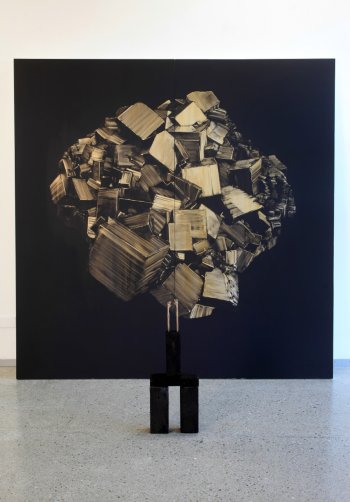 Earlier
this year I created two hexes as entries for national art
competitions. I paired the alleged metaphysical properties of iron
pyrite (“Fool’s Gold”) with the animist activities of my art
making practice, presenting pieces that explored the spurious,
sinister and seductive nature of this magical kind of thinking.
Earlier
this year I created two hexes as entries for national art
competitions. I paired the alleged metaphysical properties of iron
pyrite (“Fool’s Gold”) with the animist activities of my art
making practice, presenting pieces that explored the spurious,
sinister and seductive nature of this magical kind of thinking.
The initial entry was rejected and re-exhibited as Failed Hex for the Waikato Art Awards. The second, Hex for Wallace (2014), “succeeded” and was a finalist in The Wallace Art Awards.
My current show at Sanderson Contemporary Art, Active Agents / Passive Matter continues my speculative efforts to examine my capacity as an animist.
The paintings and objects examine the vitality that we attribute to images and objects: agency, autonomy, motivation, aura, fecundity and other symptoms of “vital signs”.
I’m fascinated by art historian WJT Mitchell’s concept of “double consciousness”, discussed in his book What Do Pictures Want? (2005). Mitchell observes that as modern people we relate to images as if they are alive “demanding things from us, persuading, seducing, and leading us astray”.
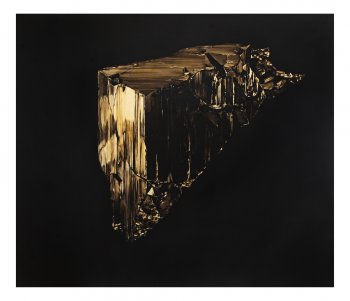 However, when challenged we are
certain that “works of art do not have minds of their own, and that
images are really quite powerless to do anything without the
cooperation of their beholders”. To illustrate the point he alludes
to the conflict we experience when asked to cut out the eyes from a
photograph of a loved family member.
However, when challenged we are
certain that “works of art do not have minds of their own, and that
images are really quite powerless to do anything without the
cooperation of their beholders”. To illustrate the point he alludes
to the conflict we experience when asked to cut out the eyes from a
photograph of a loved family member.
Mitchell describes this “double consciousness’ as ‘vacillating between magical beliefs and skeptical doubts, naïve animism and hardheaded materialism, mystical and critical attitudes”.
Like Mitchell, I believe our magical attitudes towards images are as powerful in the modern world as they were in the past. This current work is an effort to draw the viewer into this terrain, prompting them to consider how this slippage occurs seamlessly, to notice their own “double consciousness” and where they position themselves in relationship to it.
Artist Josephine Cachemaille lives in Nelson with her husband Grant Smithies and daughter Rosa. Her work is in public and private collections here and overseas.
Her new solo show Active Agents / Passive Matter opens at Sanderson Contemporary Art, Osbourne Lane, 2 Kent Street, Newmarket, 5.30pm on Tuesday 28th October. All welcome. The exhibition runs until November 9. For further details see here.
“Cachemaille’s sumptuous, monochromatic paintings are reminiscent of the late Tony Fomison, while her way of appropriating cast-off found objects, which she then tweaks by burning, carving or inscribing them with text, brings to mind the anthropomorphic sculptures of Francis Upritchard.” (Virginia Were, Editor, Art News New Zealand, 2013)
.
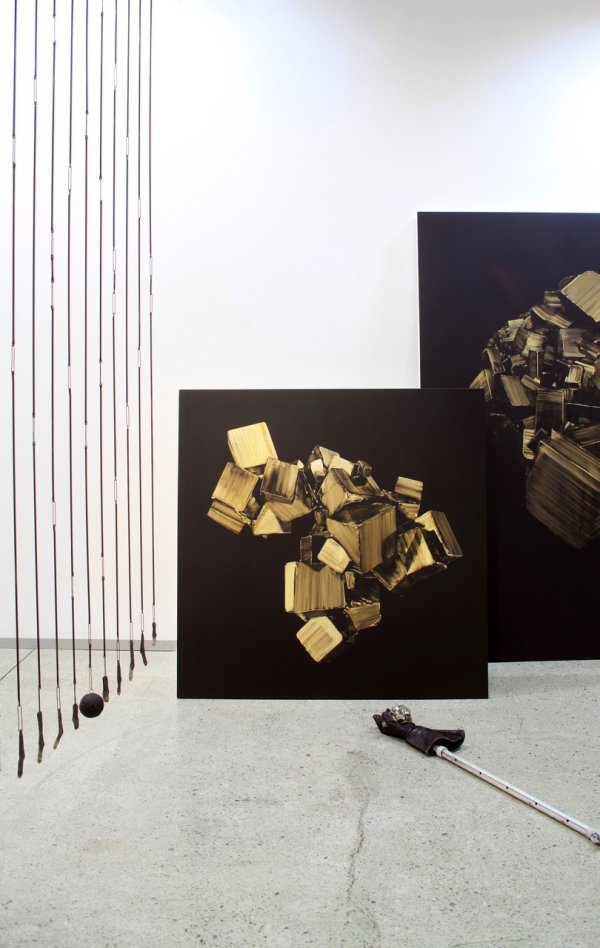



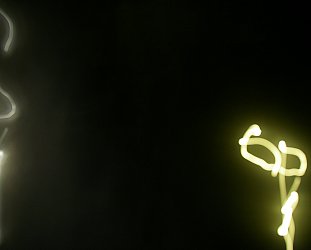

post a comment